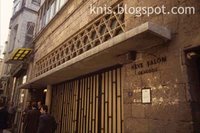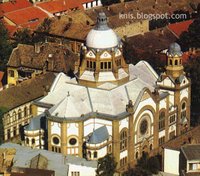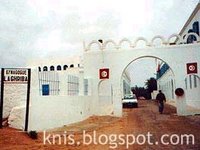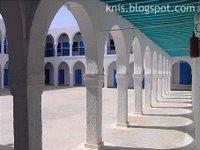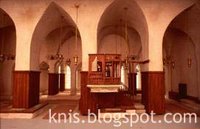Sinagoga de la calle Dohany, en Budapest, Hungría.
También llamada Tabac-Shul (tabac es la traducción al Idish de dohany -tabaco-), fue construida a mediados del siglo XIX, siendo una de las sinagogas más grandes del mundo, pudiendo albergar a unas 3.000 personas sentadas.Durante la Shoah fue utilizada por los nazis como punto de concentración para la deportación a los campos de exterminio, sirviendo también como refugio para los judíos. Muchos de los fallecidos en el ghetto fueron sepultados en cementerio aledaño a la sinagoga. Los daños ocasionados al edificio durante la guerra no fueron refaccionados sino hasta la decada del 90', con la llegada de la democracia a Hungría.
Also called Tabac-Schul (tabac is the translation to the Yidish of dohany - tobacco), was built in the middle of century XIX, being one of the biggest synagogues of the world, being able to lodge 3,000 seated people. During the Shoah it was used by the Nazis like a concentration area for the deportation to the extermination fields, also serving like refuge for the Jews. Many of the deceaseds in the ghetto were buried in a bordering cemetery to the synagogue. The damages caused to the building during the war were not repaired but until the decade of the 90's, with the arrival of the democracy to Hungary.







